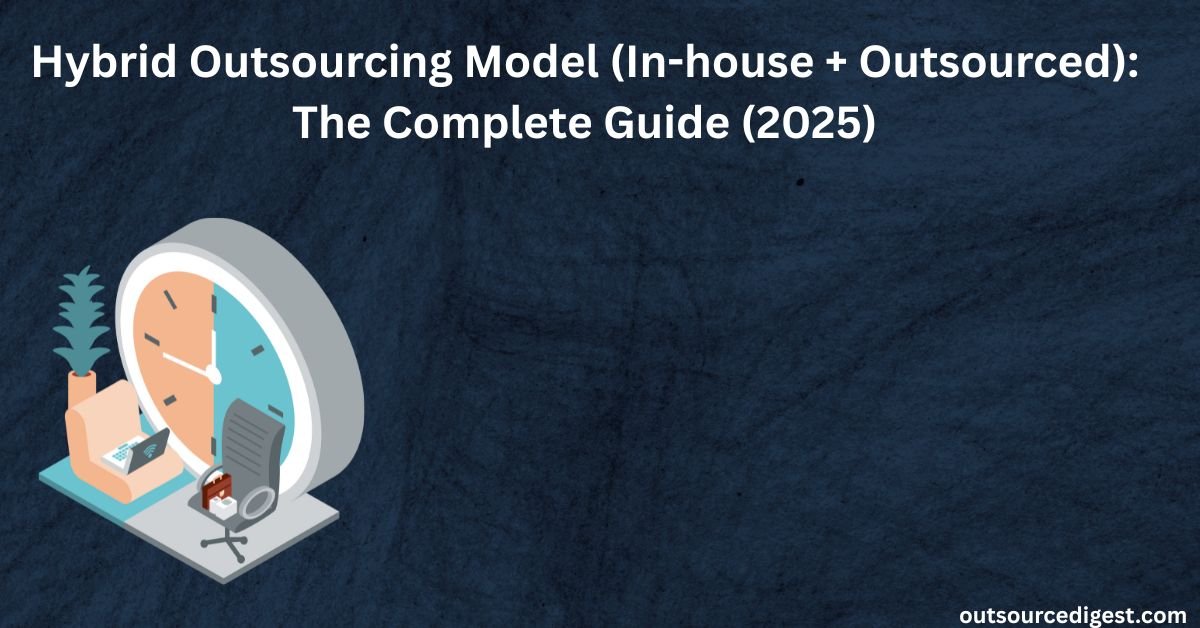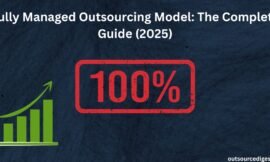For many small and medium-sized businesses (SMBs), finding the right balance between cost efficiency and customer satisfaction is a constant challenge. Relying entirely on in-house teams can be expensive, while fully outsourcing may result in the loss of direct control over customer relationships. This is where the Hybrid Outsourcing Model (In-house + Outsourced) becomes an ideal solution.
In this approach, businesses keep their in-house teams focused on high-touch or strategic customers, while outsourcing routine inquiries to specialized providers. The hybrid model offers the best of both worlds: control where it matters most and efficiency where it saves time and money.
This guide will break down how the hybrid model works, its benefits, drawbacks, and when it’s the right fit for your organization.
What Is the Hybrid Outsourcing Model?
The Hybrid Outsourcing Model is a blended approach where businesses divide responsibilities between internal staff and external outsourcing partners:
- In-house teams handle complex, sensitive, or high-value interactions (e.g., enterprise accounts, strategic clients, or technical escalations).
- Outsourced agents manage routine or repetitive tasks (e.g., FAQs, billing questions, or general troubleshooting).
This setup ensures that critical customer segments receive personalized attention, while day-to-day operations remain cost-effective.
How the Hybrid Model Works
- Segmentation of Support: Businesses categorize customer interactions into strategic (high-touch) and standard (routine).
- Dual Team Management: In-house agents focus on brand-sensitive queries, while outsourced teams manage volume-driven inquiries.
- Knowledge Sharing: A centralized knowledge base ensures consistency between in-house and outsourced teams.
- Technology Integration: Tools like CRMs and ticketing systems connect both teams to maintain a seamless customer experience.
Benefits of the Hybrid Outsourcing Model
- Control Over Critical Accounts
Your internal team handles premium customers, ensuring stronger relationships and tailored solutions.
- Cost Efficiency
By outsourcing routine tasks, businesses reduce operational costs without compromising quality.
- Scalability
Outsourced teams absorb demand spikes, allowing in-house staff to focus on priority cases.
- Risk Mitigation
Sensitive customer data and high-stakes negotiations remain in-house, reducing dependency on external providers.
- Improved Customer Experience
Customers with different needs receive support that matches the level of importance—from quick responses to personalized service.
Challenges of the Hybrid Model
Despite its advantages, the hybrid approach presents some challenges:
- Coordination Complexity
Managing two teams (internal and external) requires clear communication and alignment.
- Consistency Issues
If training isn’t standardized, customers may notice differences in tone or knowledge between in-house and outsourced agents.
- Higher Management Overhead
Compared to a fully dedicated or fully outsourced model, a hybrid requires more monitoring and coordination.
- Technology Dependency
Strong systems integration is essential to avoid data silos between teams.
When Should SMBs Choose the Hybrid Outsourcing Model?
The hybrid model is a great fit for companies that:
- Serve different customer segments (e.g., enterprise clients vs. general consumers).
- Face seasonal demand spikes but want to maintain quality for VIP customers.
- Handle complex or sensitive queries that require in-depth brand knowledge.
- Want to save costs on routine support without sacrificing control over key accounts.
Example: A SaaS company with enterprise clients and thousands of SMB customers could let in-house staff focus on enterprise accounts while outsourcing basic support tickets to an external team.
Hybrid Model vs. Shared/Blended Team vs. Dedicated Team
| Feature | Hybrid Model | Shared/Blended Team | Dedicated Team |
|---|---|---|---|
| Cost | Moderate | Lower | Higher |
| Control | High (for critical cases) | Limited | Full (but costly) |
| Scalability | High | Flexible | Moderate |
| Consistency | Requires training alignment | Moderate | Strong |
| Best For | SMBs with mixed customer needs | SMBs with moderate volume | Enterprises with complex, high-volume needs |
Best Practices for Success
- Segment Clearly: Define which cases stay in-house and which go to outsourcing.
- Centralize Knowledge: Maintain a unified knowledge base accessible to both teams.
- Align SLAs: Ensure service-level agreements cover both internal and external teams.
- Regular Training: Standardize brand training to ensure consistent experiences.
- Use Technology: Leverage CRMs and automation tools to keep workflows aligned.
- Monitor Quality: Track performance through KPIs, CSAT, and customer feedback.
Real-World Example
A mid-sized e-commerce retailer adopted the Hybrid Outsourcing Model. Their in-house team managed VIP and repeat customers, while outsourced agents handled routine queries like order status and returns. This approach reduced support costs by 35% while increasing satisfaction among premium customers, who appreciated the personalized service.
Frequently Asked Questions (FAQ)
Yes, but it provides more control and higher quality for critical customer segments.
Create a unified training program and use shared technology platforms for ticketing and CRM.
Usually, startups begin with shared or dedicated models. Hybrid becomes practical when businesses scale and have distinct customer segments.
SaaS, e-commerce, and financial services often benefit since they serve both high-value clients and large volumes of general customers.
Conclusion
The Hybrid Outsourcing Model (In-house + Outsourced) provides a strategic balance for SMBs that want to maintain control over critical customer relationships while outsourcing routine tasks for efficiency. While it requires more coordination than other models, its ability to combine personalization with scalability makes it a powerful option for growing businesses.
By following best practices and ensuring seamless collaboration between internal and external teams, companies can maximize both cost savings and customer satisfaction.




